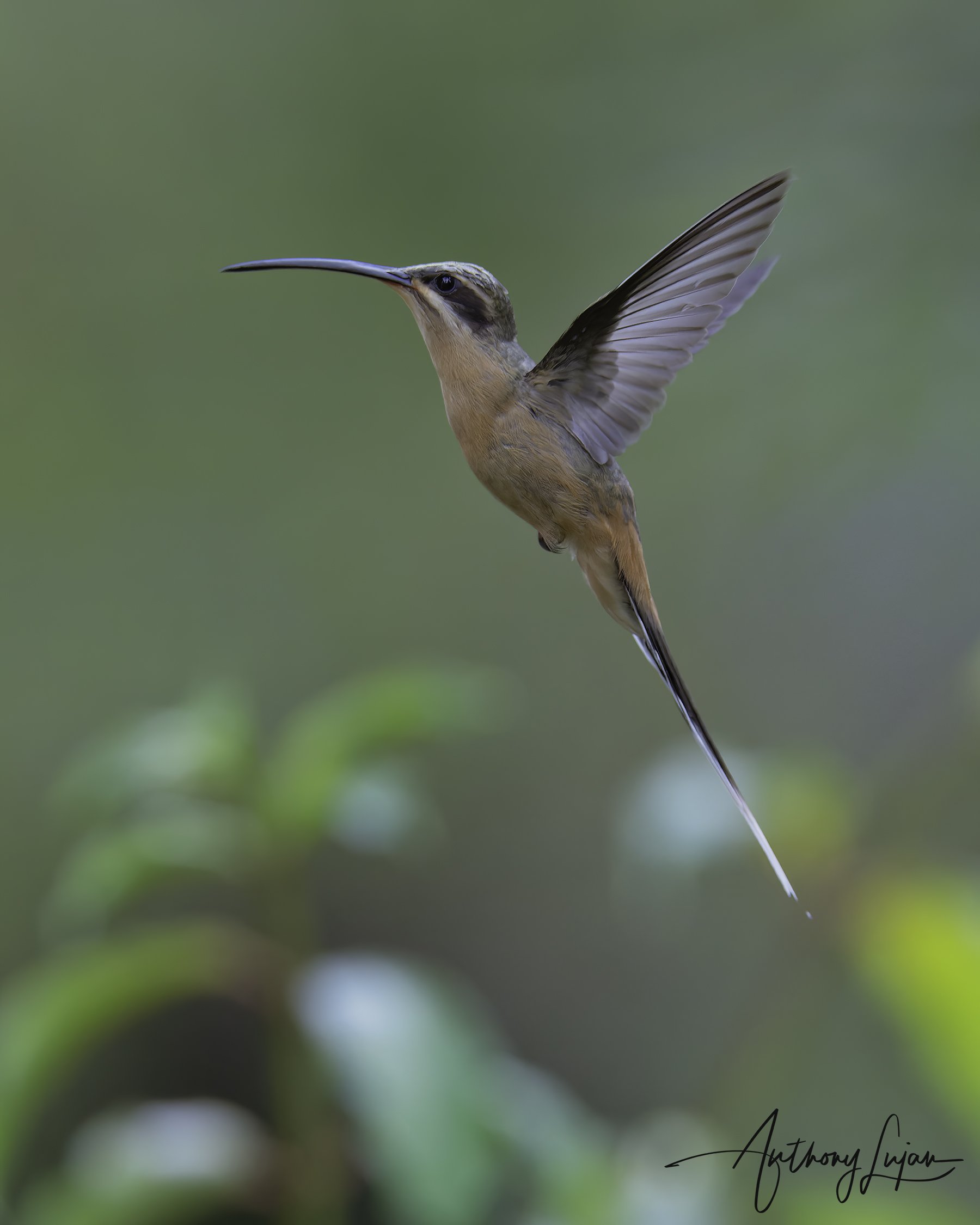Planalto Hermit
Planalto Hermit (Phaethornis pretrei)
Name Origin:
The genus Phaethornis comes from Phaethon, the mythological Greek son of the sun god Helios, and ornis, meaning bird. The species epithet pretrei honors French naturalist Jean Baptiste de Prétre.
Quick Facts
🪶 Length: 12–14 cm (4.7–5.5 in)
⚖️ Weight: ~3.5–5 g (0.12–0.18 oz)
🌎 Range: Eastern and central Brazil, eastern Bolivia, Paraguay, and northern Argentina
🧭 Elevation: Sea level to 1,200 m
🌸 Diet: Nectar and small arthropods
🏡 Habitat: Cerrado, gallery forest, dry forest edges, and second growth
🧬 Clade: Phaethornithinae (a.k.a. “hermits”)
📊 Status: Least Concern (IUCN 2024)
Subspecies & Distribution
Monotypic — no subspecies recognized.
Species Overview
The Planalto Hermit is a widespread and adaptable hummingbird of eastern South America, especially common in Brazil’s cerrado and transitional forest habitats. It is a medium-sized hermit with a decurved bill, prominent facial stripes, and a pale-tipped tail. It can be found in both native habitats and human-altered areas, including gardens and parks.
Male Description:
Bronzy to olive-brown upperparts, pale buff underparts, dark cheek stripe with pale supercilium and malar lines. Tail with white tips, long decurved black bill.
Female Description:
Similar to male, often with slightly duller plumage and sometimes a marginally shorter bill. Sexes are not strongly dimorphic.
Habitat & Behavior:
Inhabits open woodland, forest edge, cerrado, and second growth, often near water sources. Feeds by traplining—a foraging route between flowering plants—and is typically solitary. Can be seen hovering at tubular flowers or catching insects midair. Vocalizations include sharp calls and repeated chirps, especially during territorial displays.
Conservation Note:
The Planalto Hermit is one of the more adaptable hermits and thrives in a range of semi-open habitats, including areas modified by agriculture or human settlement. Although the cerrado biome is under increasing pressure, this species remains widespread and locally common, with no immediate threats identified.



